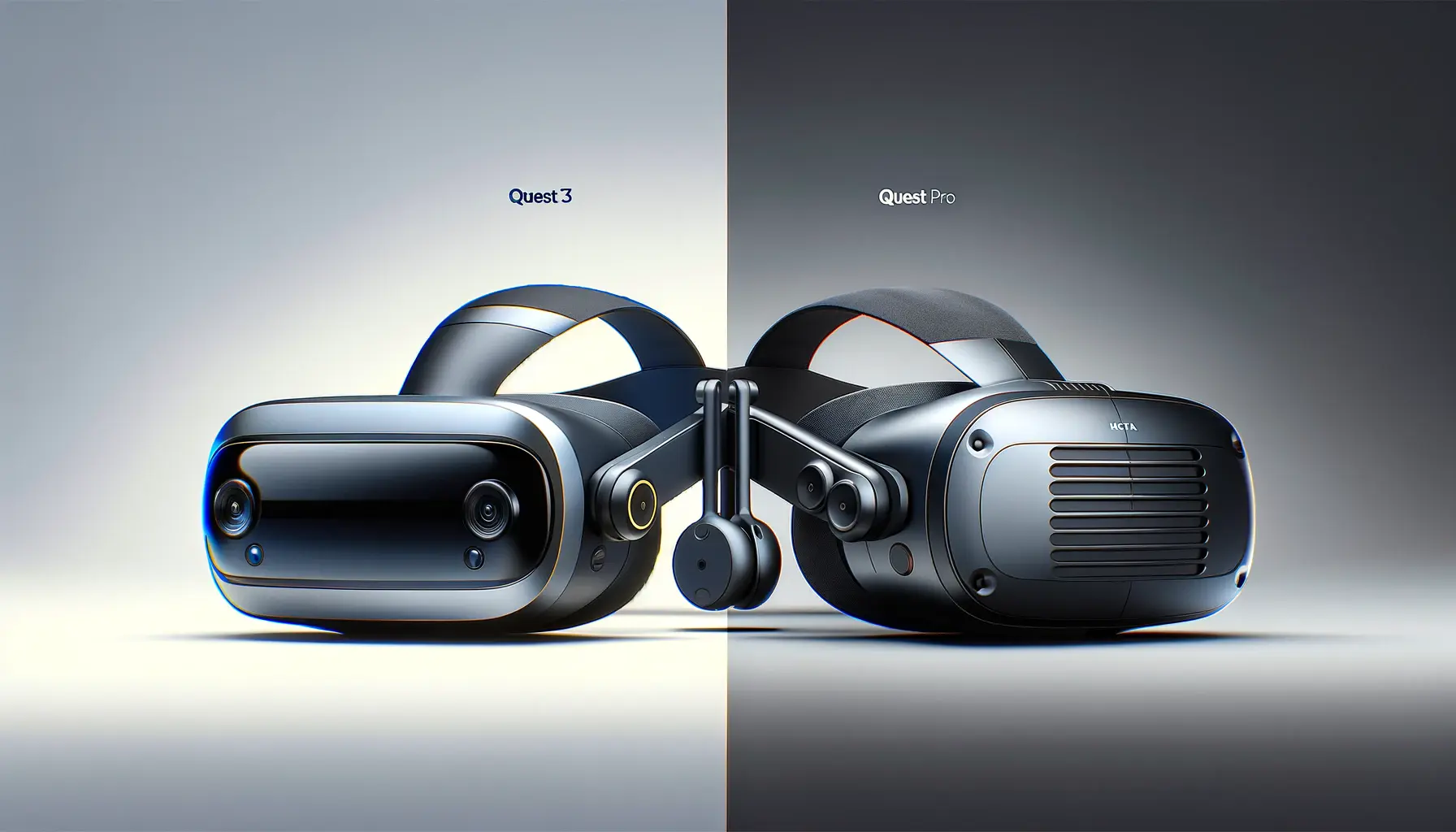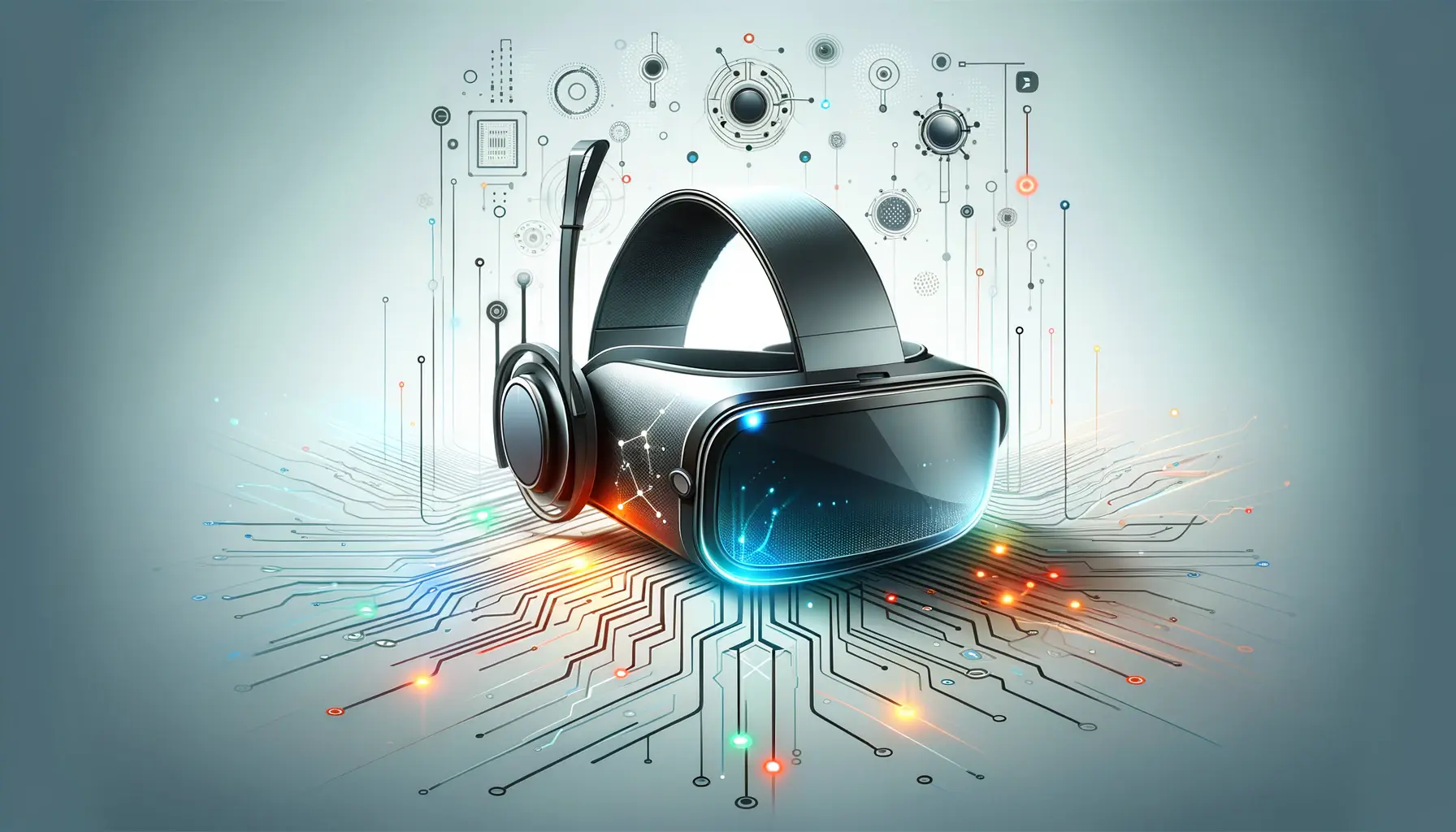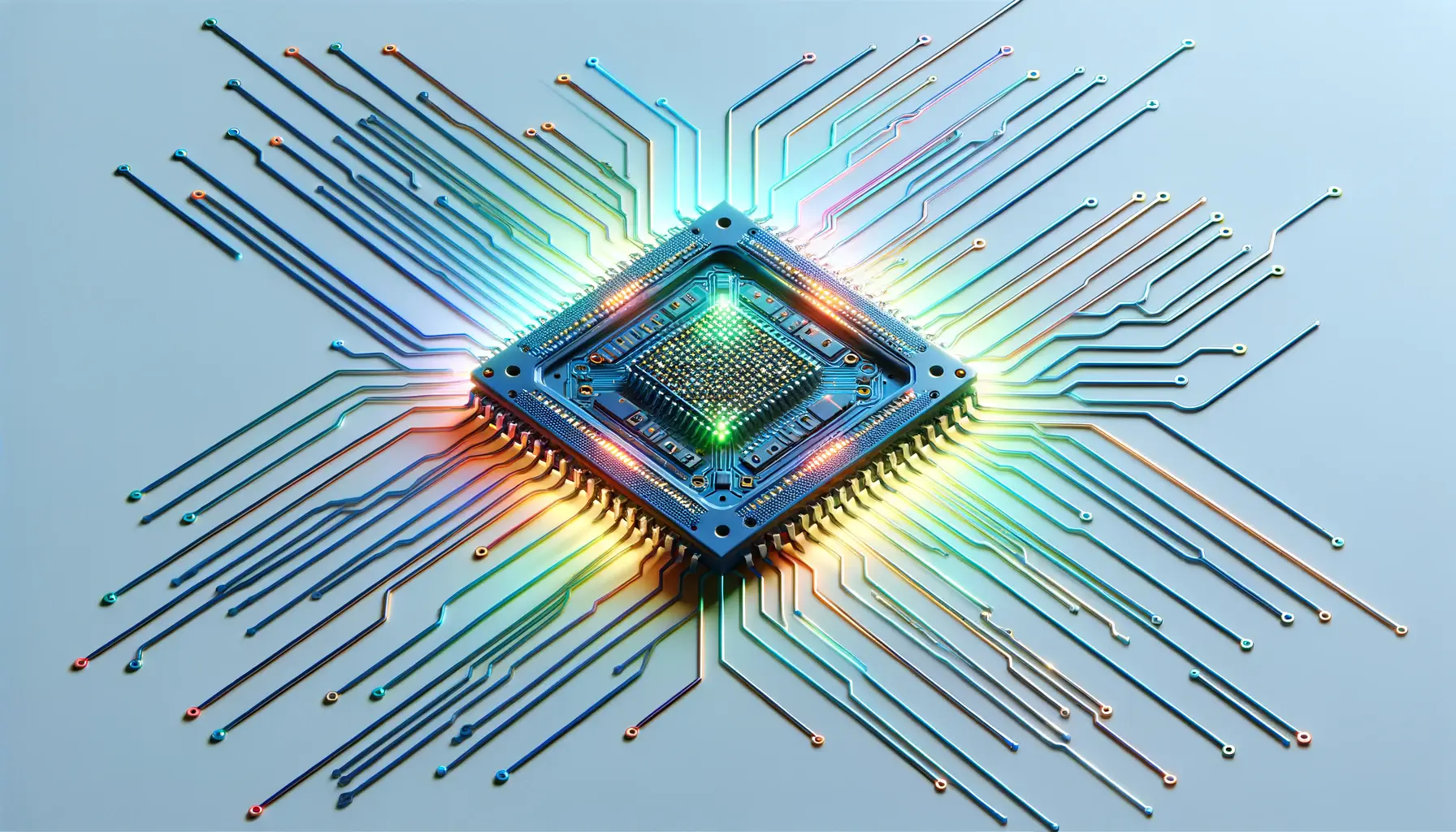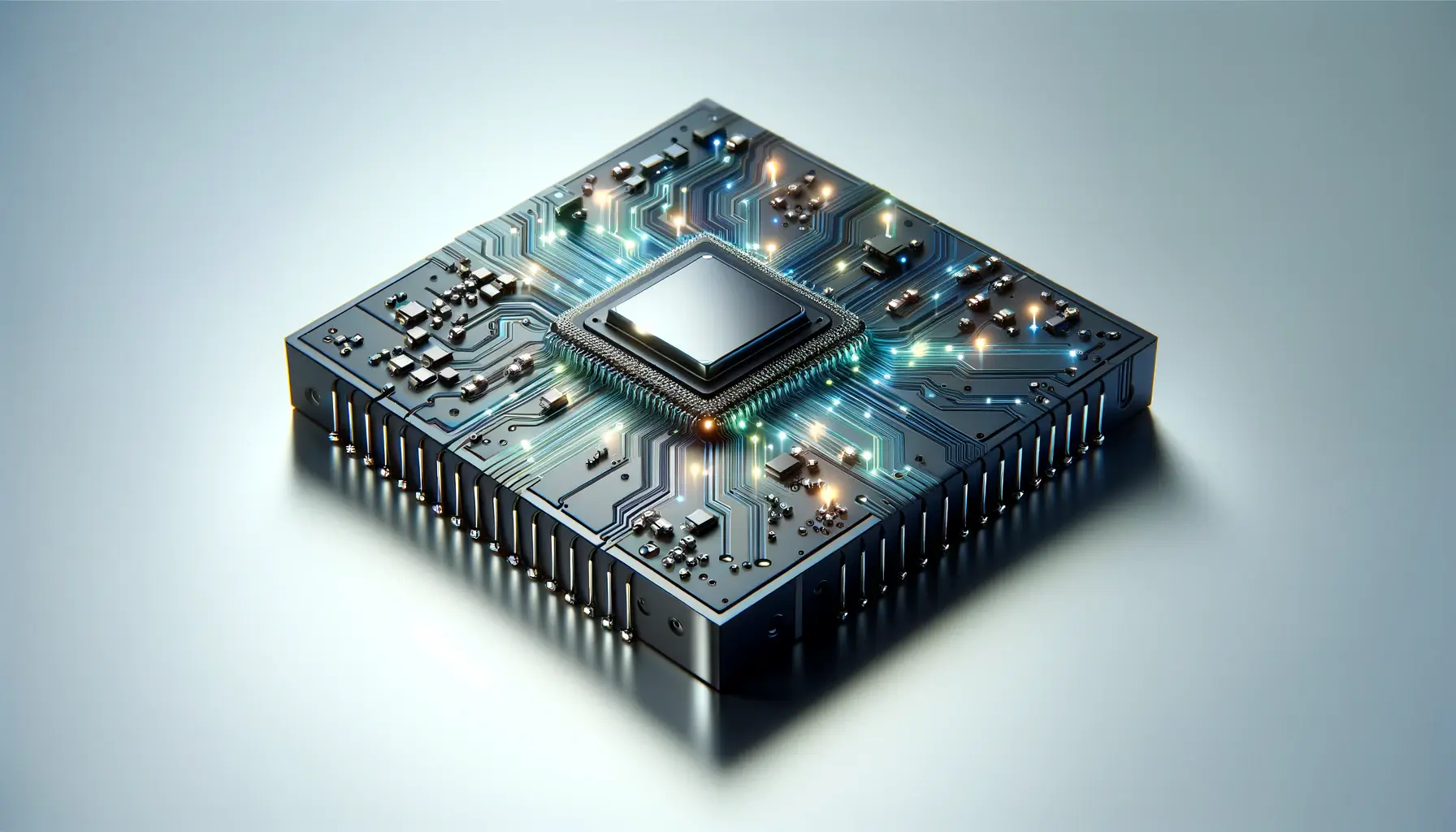The Meta Quest 3 represents a significant leap forward in the realm of virtual reality (VR), blending cutting-edge technology with immersive experiences to redefine what’s possible in digital spaces.
As the latest iteration in Meta’s lineup of VR headsets, it builds upon the foundation laid by its predecessors, introducing innovations that push the boundaries of VR gaming, social interaction, and professional applications.
This article delves into the intricate technology that powers the Meta Quest 3, offering insights into how it sets new standards for virtual reality experiences.
At the heart of the Meta Quest 3’s appeal is its commitment to delivering a seamless, highly immersive VR experience.
This is achieved through a combination of advanced hardware, sophisticated software algorithms, and user-centric design principles.
The Quest 3 is not just a gadget; it’s a portal to other worlds, crafted with the user’s comfort and immersion at its core.
Let’s explore the technological advancements and design innovations that make the Meta Quest 3 a standout device in the ever-evolving landscape of virtual reality.
- Revolutionary Hardware Enhancements
- Immersive Audio Experience
- Advanced Interaction and Control
- User Comfort and Ergonomic Design
- Connectivity and Multiplayer Experiences
- Future-Proofing Through Updates and Expansion
- Environmental and Social Responsibility
- Embracing the Future with Meta Quest 3
- Meta Quest 3 Frequently Asked Questions
Revolutionary Hardware Enhancements
Next-Generation Processing Power
The Meta Quest 3 is powered by a state-of-the-art processor that significantly outperforms its predecessors.
This next-generation chipset facilitates lightning-fast load times, high-resolution graphics, and smooth, lag-free performance.
The enhanced processing capability ensures that users can enjoy complex VR environments and demanding applications without experiencing any drop in quality or performance.
This leap in processing power is a game-changer for VR, enabling more detailed and immersive virtual experiences than ever before.
Furthermore, the inclusion of a more powerful GPU supports advanced graphical features such as dynamic lighting, realistic textures, and complex particle effects.
These graphical improvements are crucial for creating lifelike virtual worlds, enhancing the user’s sense of presence within the VR environment.
The Quest 3’s hardware upgrades are a testament to Meta’s commitment to pushing the boundaries of what’s possible in virtual reality, offering users an unparalleled VR experience.
Enhanced Display Technology
The Meta Quest 3 boasts a high-resolution display that brings virtual worlds to life with stunning clarity and vibrant colors.
The device features an advanced LCD panel that offers a significant increase in pixels per inch (PPI), resulting in sharper images and more detailed visuals.
This improvement in display technology ensures that users can experience VR content with a level of detail and realism that was previously unattainable.
Additionally, the Quest 3 incorporates innovative lens technology that reduces glare and increases the field of view, further immersing users in their virtual environments.
The combination of a high-resolution display and cutting-edge lens design allows for a more comfortable and engaging VR experience, making long sessions in virtual reality more enjoyable and less fatiguing.
The Meta Quest 3’s revolutionary hardware enhancements, including its next-generation processing power and enhanced display technology, set a new standard for virtual reality experiences.
Immersive Audio Experience
The Meta Quest 3 takes auditory immersion to new heights with its state-of-the-art audio system.
Unlike traditional VR headsets that rely on external headphones or basic built-in speakers, the Quest 3 integrates spatial audio technology directly into the device.
This innovative approach to sound reproduction creates a 3D audio landscape that envelops the user, making virtual environments feel even more real.
The precise directionality and depth of the audio allow users to detect sounds from specific locations in the virtual space, enhancing the overall sense of presence and immersion.
Key features of the Quest 3’s immersive audio experience include:
- 3D Spatial Audio: Delivers realistic soundscapes that accurately mimic how sound behaves in the real world, providing users with a more immersive VR experience.
- Custom Audio Algorithms: Tailored software algorithms optimize sound delivery for various types of content, ensuring the best possible audio quality across games, movies, and social experiences.
- Integrated Speaker System: The built-in speakers are designed to project sound directly towards the user’s ears without the need for external devices, maintaining the headset’s sleek and wireless design.
Software Innovations and Ecosystem
The Quest 3 is not only a marvel of hardware engineering but also a testament to the power of software in creating immersive VR experiences.
Meta has developed a robust ecosystem of apps, games, and tools specifically designed to take advantage of the headset’s advanced capabilities.
This ecosystem is supported by the Quest Operating System (OS), a custom software platform that provides a seamless interface between the user, the hardware, and the vast array of available VR content.
Highlights of the Quest 3’s software innovations include:
- Intuitive User Interface: A user-friendly interface that makes navigating the VR environment and accessing content straightforward and enjoyable.
- Advanced Developer Tools: A suite of development tools and APIs that empower creators to build complex and engaging VR applications that push the limits of what’s possible in virtual reality.
- Comprehensive Content Library: Access to a wide range of VR content, from blockbuster games and immersive educational experiences to fitness apps and social platforms, ensuring there’s something for everyone.
The combination of immersive audio, innovative software, and a comprehensive content ecosystem makes the Meta Quest 3 a complete VR solution that caters to a wide range of interests and applications.
Advanced Interaction and Control
The Meta Quest 3 revolutionizes how users interact with virtual environments through its advanced control mechanisms.
Moving beyond traditional button presses and joystick movements, the Quest 3 introduces hand tracking and gesture recognition technologies that allow for more natural and intuitive interactions.
This leap forward in VR interaction not only enhances the user experience but also opens up new possibilities for application and game design.
Key components of the Quest 3’s interaction system include:
- Hand Tracking: Utilizes advanced sensors to accurately track the user’s hand movements, enabling interaction with virtual objects without the need for physical controllers.
- Gesture Recognition: Interprets specific hand gestures as commands, allowing users to perform actions like grabbing, pointing, or swiping in the air to control the VR environment.
- Haptic Feedback: Provides tactile sensations through the controllers to simulate the feeling of touching or holding objects in the virtual world, enhancing the realism of interactions.
Seamless Integration with Real-World Environments
The Quest 3’s mixed reality capabilities represent a significant advancement in blending virtual content with the real world.
By leveraging high-resolution passthrough cameras and spatial awareness technology, the Quest 3 allows users to see and interact with their physical surroundings while immersed in VR.
This seamless integration not only improves safety by making users aware of their environment but also enables innovative applications that merge real and virtual elements in compelling ways.
Examples of mixed reality integration include:
- Virtual Workspaces: Transforming physical desks and work environments into customizable virtual offices with unlimited digital screens and interactive tools.
- Augmented Learning: Overlaying educational content onto real-world objects for interactive learning experiences that engage and inform.
- Social Presence: Allowing users to see representations of other people in their physical space during virtual meetings or gatherings, enhancing the sense of togetherness.
The Meta Quest 3’s advanced interaction and control mechanisms, combined with its mixed reality capabilities, not only enhance the immersion and realism of VR experiences but also pave the way for new forms of digital interaction and collaboration.
User Comfort and Ergonomic Design
The Meta Quest 3 is designed with user comfort and ergonomics at its forefront, recognizing that the physical experience of wearing a VR headset can greatly impact the overall virtual experience.
To address common issues associated with prolonged VR use, such as discomfort and eye strain, Meta has implemented several design innovations in the Quest 3.
These improvements ensure that users can enjoy extended VR sessions without the drawbacks that have plagued earlier VR headsets.
Enhancements in user comfort and ergonomic design include:
- Lightweight Materials: The Quest 3 is constructed from advanced materials that reduce the overall weight of the headset, minimizing neck strain and fatigue.
- Adjustable Straps and Fit: Featuring a versatile strap system and multiple fit options, the Quest 3 can be easily adjusted to fit a wide range of head sizes and shapes comfortably.
- Improved Ventilation: Enhanced airflow design helps to dissipate heat more effectively, keeping the user cool and preventing the lenses from fogging up during use.
Visual Comfort and Eye Safety
Visual comfort is paramount in virtual reality, as poor image quality or improper display settings can lead to eye strain and headaches.
The Quest 3 addresses these concerns with several key features aimed at ensuring a visually comfortable and safe experience.
By prioritizing eye health and visual comfort, Meta ensures that users can immerse themselves in virtual worlds without compromising their well-being.
Features focused on visual comfort and eye safety include:
- Adjustable IPD (Interpupillary Distance): Allows users to customize the distance between the lenses to match their unique eye spacing, ensuring optimal focus and reducing eye strain.
- Blue Light Filtering: The Quest 3 incorporates technology to reduce blue light exposure, which can contribute to eye fatigue and disrupt sleep patterns.
- High-Resolution Displays: The sharp, clear displays minimize the screen-door effect and provide a more comfortable viewing experience, even during long VR sessions.
By integrating ergonomic design principles and focusing on user comfort, the Meta Quest 3 sets a new standard for wearable technology, allowing users to explore virtual spaces with ease and comfort.
Connectivity and Multiplayer Experiences
The Meta Quest 3 enhances social interaction and connectivity within virtual environments, offering users a wide array of multiplayer experiences and seamless integration with social media platforms.
Recognizing the importance of social connections in virtual reality, Meta has developed features that facilitate easy communication, collaboration, and competition among users, regardless of their physical location.
This focus on connectivity transforms the Quest 3 from a solitary device into a portal for shared virtual experiences.
Key aspects of the Quest 3’s connectivity include:
- Wireless Internet Connectivity: With built-in Wi-Fi, the Quest 3 allows users to connect to the internet without the need for external devices, enabling online multiplayer games, social VR platforms, and access to cloud-based content.
- Social Media Integration: Users can link their Quest 3 to social media accounts, making it easy to share VR experiences, livestream gameplay, and stay connected with friends and followers in virtual spaces.
- Multiplayer Gaming: The Quest 3 supports a vast library of multiplayer games that range from cooperative adventures to competitive sports, allowing users to play and interact with others in real-time.
Virtual Meetings and Collaboration
Beyond gaming and socializing, the Quest 3 serves as a powerful tool for virtual meetings and collaborative work.
With the rise of remote work and digital nomadism, the ability to connect and collaborate in virtual spaces has become increasingly valuable.
The Quest 3 addresses this need by offering immersive meeting environments and collaboration tools that mimic the dynamics of in-person interactions.
Features that support virtual meetings and collaboration include:
- Virtual Meeting Rooms: Users can join or host meetings in virtual spaces that simulate conference rooms, offering features like digital whiteboards, presentation tools, and spatial audio for realistic voice communication.
- Collaborative Workspaces: The Quest 3 enables teams to work together on projects in virtual environments, where they can manipulate 3D models, brainstorm ideas, and share digital content as if they were in the same physical space.
- Integration with Productivity Tools: Compatibility with popular productivity and collaboration software ensures that users can access their work documents, calendars, and communication tools within the VR environment.
The Meta Quest 3’s emphasis on connectivity and multiplayer experiences not only enriches the social aspect of virtual reality but also opens up new possibilities for remote work and collaborative projects, making it a versatile tool for both leisure and professional use.
Future-Proofing Through Updates and Expansion
The Meta Quest 3 is designed with the future in mind, featuring a robust architecture that supports ongoing updates and expansions.
Meta’s commitment to continuously enhancing the Quest 3’s capabilities ensures that the device remains at the cutting edge of virtual reality technology.
Through regular software updates, users can access new features, improved performance, and an expanding library of content, keeping the VR experience fresh and engaging over time.
Strategies for future-proofing the Quest 3 include:
- Software Updates: Regularly released updates that introduce new functionalities, enhance existing features, and improve system stability and security.
- Content Expansion: Continuous growth of the Quest 3’s content library, including games, applications, and experiences across various genres and use cases.
- Developer Support: Ongoing support and resources for developers, encouraging the creation of innovative VR content that leverages the Quest 3’s advanced capabilities.
Adapting to Emerging VR Trends
As virtual reality technology evolves, the Quest 3 is poised to adapt to emerging trends and user demands.
Meta’s proactive approach to incorporating feedback and exploring new VR possibilities ensures that the Quest 3 remains relevant and desirable.
By staying ahead of industry trends and user expectations, the Quest 3 is well-positioned to lead the market in immersive virtual experiences.
Areas of focus for adapting to VR trends include:
- Augmented Reality (AR) Integration: Exploring the convergence of VR and AR to create mixed reality experiences that blend virtual content with the real world in innovative ways.
- Artificial Intelligence (AI): Leveraging AI to enhance user interactions, content personalization, and environmental understanding within VR experiences.
- Wearable Technology Integration: Expanding the Quest 3’s ecosystem to include wearable devices that enhance immersion and provide new forms of input and feedback.
The Meta Quest 3’s strategy for future-proofing through updates, content expansion, and adaptation to emerging VR trends ensures that it remains a leading platform for immersive virtual experiences, offering users a device that grows and evolves with the rapidly changing landscape of virtual reality.
Environmental and Social Responsibility
In the development and production of the Meta Quest 3, Meta places a strong emphasis on environmental sustainability and social responsibility.
Recognizing the impact that technology manufacturing can have on the planet, Meta has implemented measures to reduce the environmental footprint of the Quest 3.
This commitment to sustainability reflects a broader trend in the tech industry towards more eco-friendly practices and products.
Initiatives for environmental and social responsibility include:
- Eco-Friendly Materials: Utilizing recycled materials in the construction of the Quest 3 and its packaging to minimize waste and reduce the use of virgin plastics.
- Energy Efficiency: Designing the Quest 3 to operate with maximum energy efficiency, thereby reducing the carbon footprint associated with its use.
- Responsible Manufacturing: Partnering with suppliers and manufacturers that adhere to high standards of environmental stewardship and labor practices.
Supporting the VR Community
Beyond its environmental initiatives, Meta also focuses on supporting the virtual reality community through educational programs, developer resources, and initiatives aimed at making VR more accessible to a diverse audience.
By fostering an inclusive and supportive VR ecosystem, Meta aims to ensure that the benefits of virtual reality technology are available to everyone, regardless of background or experience level.
Efforts to support the VR community include:
- Developer Grants: Offering financial support and resources to independent developers and small studios to encourage innovation and diversity in VR content creation.
- VR Education Programs: Partnering with educational institutions to integrate VR into curricula and provide students with immersive learning experiences.
- Accessibility Features: Continuously improving the Quest 3’s accessibility features to accommodate users with disabilities, ensuring that everyone can enjoy the benefits of virtual reality.
Contrary to common misconceptions, the technology sector, led by companies like Meta, is increasingly prioritizing environmental sustainability and social responsibility, demonstrating that innovation can go hand in hand with caring for the planet and supporting communities.
Embracing the Future with Meta Quest 3
The Meta Quest 3 stands as a beacon of innovation in the virtual reality landscape, embodying the pinnacle of technological advancement and user-centric design.
This device not only pushes the boundaries of immersive entertainment and professional applications but also sets new standards for social connectivity and environmental responsibility in the tech industry.
As we delve into the multifaceted aspects of the Quest 3, it becomes clear that Meta has crafted more than just a VR headset; they have created a comprehensive platform for future-proof virtual experiences.
The Pinnacle of Virtual Reality Technology
At its core, the Meta Quest 3 is a testament to the power of cutting-edge technology in creating deeply immersive and lifelike virtual environments.
From its advanced processing capabilities and high-resolution displays to its innovative audio system and intuitive control mechanisms, every aspect of the Quest 3 is designed to elevate the user experience to unprecedented levels.
These technological advancements not only enhance the realism and immersion of VR but also open up new possibilities for developers and creators to explore.
A Catalyst for Connection and Collaboration
Moreover, the Quest 3 transcends the traditional boundaries of virtual reality by fostering meaningful connections and collaboration.
Through its robust multiplayer features, social media integration, and support for virtual meetings, the Quest 3 bridges the gap between physical distance and social interaction.
This emphasis on connectivity not only enriches the VR experience but also positions the Quest 3 as a versatile tool for remote work, education, and social gatherings.
Commitment to Sustainability and Community
Meta’s dedication to environmental sustainability and social responsibility further distinguishes the Quest 3 from its predecessors and competitors.
By prioritizing eco-friendly materials, energy efficiency, and responsible manufacturing, Meta demonstrates a commendable commitment to minimizing the environmental impact of their products.
Additionally, the company’s efforts to support the VR community through developer grants, educational programs, and accessibility features underscore a deep-seated belief in the transformative power of virtual reality for all.
Conclusion
In conclusion, the Meta Quest 3 is not merely an evolution in virtual reality technology; it is a comprehensive platform that redefines what is possible in the realm of digital experiences.
With its unparalleled technological innovations, focus on social connectivity, and commitment to environmental and social responsibility, the Quest 3 invites users to not only explore new worlds but also to connect, create, and collaborate in ways never before imagined.
As we look to the future, the Meta Quest 3 stands as a shining example of how technology can enhance our lives, bring us closer together, and pave the way for a more sustainable and inclusive world.
Meta Quest 3 Frequently Asked Questions
Explore the most common inquiries about the Meta Quest 3, providing insights into its features, capabilities, and user experience.
The Meta Quest 3 offers a battery life that supports extended VR sessions, typically ranging between 2 to 3 hours on a full charge.
Yes, the Meta Quest 3 is designed for both entertainment and professional use, offering features suitable for virtual meetings, training, and collaborative projects.
Yes, the Meta Quest 3 supports advanced hand tracking technology, allowing users to interact with virtual environments naturally without controllers.
The Meta Quest 3 offers standalone VR experiences and can also connect to a PC for a wider range of VR content and applications.
The Meta Quest 3 features a high-resolution display, providing crisp and immersive visuals for an enhanced VR experience.
Meta Quest 3 integrates with social media platforms, enabling users to share experiences, livestream gameplay, and connect with friends in VR.
Yes, the Meta Quest 3 supports multiplayer games, allowing users to connect and play with friends in immersive virtual environments.
Yes, the Meta Quest 3 offers mixed reality experiences, blending virtual content with the real world for innovative and immersive applications.














